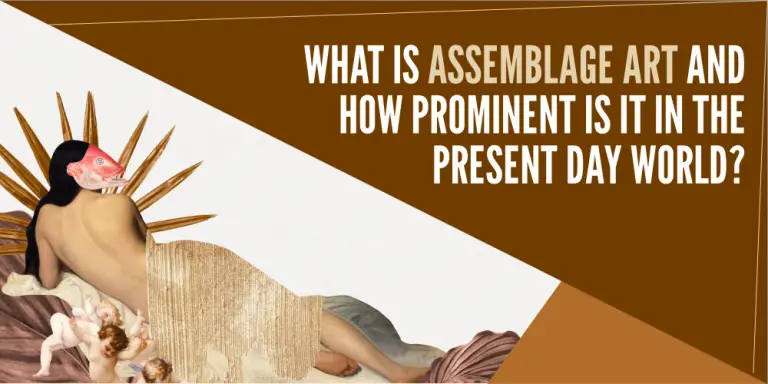Applied Art vs Fine Art: What’s the Difference?
Applied Art or Fine Art? This is a question often asked by collectors, art lovers, and students alike. However, within the art world, this is an often contentious subject. The term “art” covers a rather broad spectrum, and can include everything from commercial art, to the work of the masters like Michelangelo and Picasso. So, when it comes to applied art vs fine art, what is the difference, and how can you tell which is which?
The difference between applied art and fine art is one of ultimate purpose. Fine art is produced simply for aesthetic purposes, where the end result is found visually appealing to the viewer. Applied art is also aesthetic, but with an interactive, design, or problem-solving goal that is part of a greater purpose.
While the difference between applied arts and fine arts seems simple in definition, both fields are so wide in scope, that many pieces of applied art ultimately cross over into the fine arts category. Also, many pieces of historical artwork which we now consider as being fine art were originally produced as applied artwork.
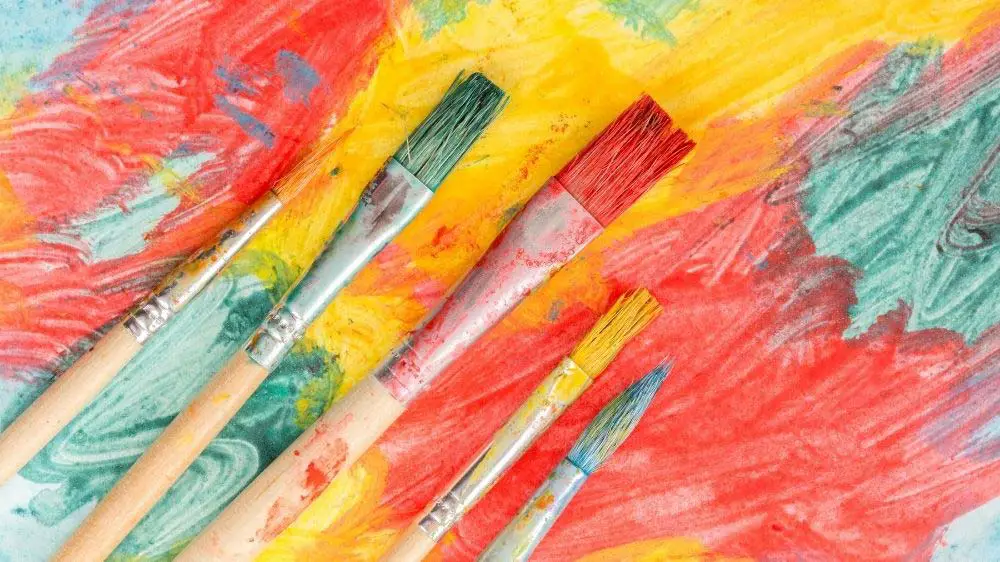
(This article may contain affiliate links and I may earn a commission if you make a purchase)
Types of Fine Art
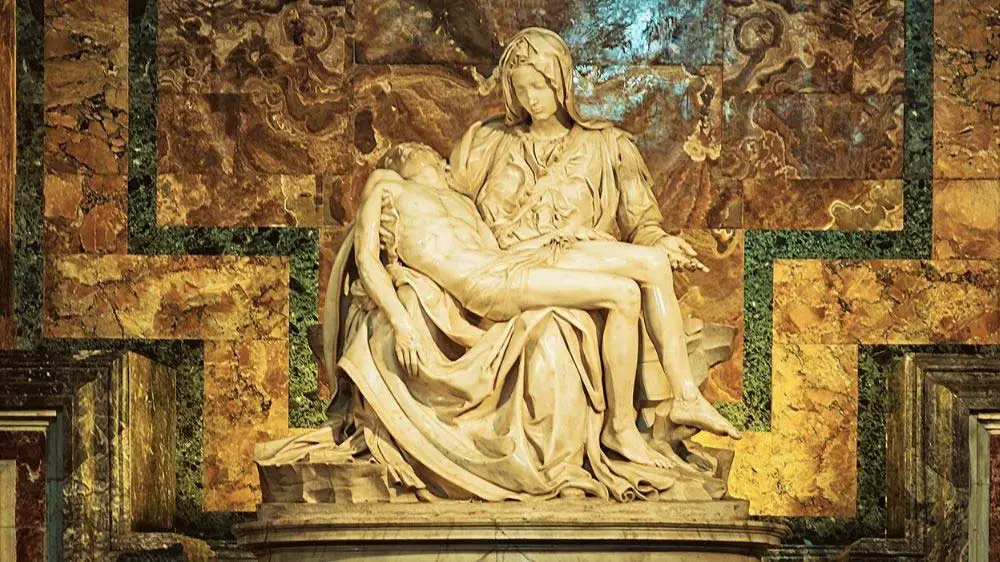
Fine art is best typified by works like The Mona Lisa, or the Pieta by Michelangelo. These works were created for a purely aesthetic purpose. This is a high and lofty goal for every artist, to simply create a work that is appreciated for its very existence.
Most people define fine art as a piece that takes a very long time to complete and is realistic. However, realism does not make a suitable definition for fine art. Some of the most realistic art comes in the realm of artistic design for everyday items such as furniture and dishes. However, as lovely and realistic as these designs may be, they are not considered fine art, because the ultimate goal is not purely an aesthetic value.
Further, some of the highest-selling pieces of fine art are as unrealistic as can be. Consider the work called “The Kimpsons” by Kaws which recently sold at a Sotheby’s auction for $14.8 million dollars. This is only one recent example of a modern piece of fine art that can not be included in realism.
Pieces of fine art are also not limited to paintings. There are fine artists who work in every genre of art. The following list is certainly not exhaustive, but it serves to show that fine art is much more than paintings on the wall.
- Sculpture. Any piece of sculpted work that is simply to be viewed is considered to be fine art. Some sculpture installations are also interactive or placed in publicly accessible places, but are still considered in the realm of fine art. (Take an online sculpture class from the comfort of your home with SkillShare).
- Pottery. Some pottery is intended for use and does not fall in the category of fine art. However, there is much pottery and other types of ceramic art are fashioned as adorning pieces rather than useful objects. These are fine art pieces. Fine art pottery can also include ancient works that are preserved. (Udemy has some excellent online pottery classes).
- Metalwork. Often metalwork is assumed to be functional art, but many metal pieces are fashioned as aesthetic art pieces. As with pottery, fine art metalwork can include historical pieces of metalwork that have been preserved.
- Murals. Murals are intended as pieces simply for public consumption and the beautification of a wall or other area. This makes them fall into the category of fine art. (Learn the art of painting murals online at SkillShare).
- Chalk art. While short-lived, art installations such as chalk art, sand art, and other forms of destructible art are also considered fine art. The short-lived nature of the medium is typically chosen by the artist to demonstrate the fleeting nature of an idea or concept.
- Photography. Some photographs are taken simply to capture the beauty of the scene or subject, and produced as a fine art print. Other photos are created as compositional works. These fall into the category of fine art photography. (CreativeLive is the best place to increase your fine art photography skills online).
Types of Applied Art

Applied art can also be broken into subcategories such as functional art or production art, each with its own subcategories of art genres. Applied art is made with an ultimate function in mind. Applied arts solve a problem or create an interactive medium that serves a purpose beyond the aesthetic.This generally takes the form of commercial art, where the art is meant to be used to create a product for sale or consumption.
Applied artists serve in a huge array of fields, worldwide, and may work for corporations or work as freelancers, depending on what they produce. Sometimes the difference between production art and fine art is difficult to distinguish. Also, there are times when works of production art become fine art pieces when collectors value them and begin to invest in pieces simply for the aesthetics of them.
- Design. From luxury cars to dining room chairs, every designer is a commercial artist, and every product begins with a design. These designs are rarely seen by consumers, but they are aesthetic renderings of the ultimate product that are used for makers to visualize the ultimate design. (Take a look at CreativeLive’s most in-demand art & design classes).
- Fashion. Fashion is also in the realm of design, but the ultimate purpose of each design is to beautify and adorn the wearer of the design. Rather than being ultimately functional, fashion design seeks to also beautify the wearer, making the aesthetics of each design even more functional and purposeful. (Learn new skills as a fashion designer online at Udemy and CreativeLive).
- Graphic Design. Graphic design is everywhere. From birthday cards to websites to advertisements and magazines, a graphic designer seeks to make the interactive world as functionally pleasing as possible. (Learn new skills as a graphic designer online at MasterClass and CreativeLive).
- Production Art. This is a wide field of creative art that includes all steps of production for cartoons, movies, books, video games, and online resources. This can be storyboarding, costume design, visualization paintings, character design, and set design paintings.
The ultimate goal of production art is to create a larger project for public interaction or consumption. A single animated movie employs thousands of production artists for every stage of production. Many paintings and designs will be further marketed as pieces of art. Iconic pieces may be sold later as fine art.
- Pottery and Ceramics. Many applied artists use sculpting skills to create functional and beautiful pieces of art such as bowls, ewers, vases, plates, and the like. These pieces are created with aesthetics in mind but are made for daily or occasional use.
- Furniture and Wood Carving. While some wood carvings can be classified as fine art, many works in wood serve more than an aesthetic purpose, so fall better into applied arts. Many cultures create things like wood furniture that are renowned for both beauty and longevity with use. (Learn to make your own furniture at Skillshare).
- Illustration. Book illustrations can be some of the most publicly available aesthetic works, but because they also serve the purpose of telling a story and are mass-produced inside of books, they are considered to be applied arts. (Up your illustration game with courses from CreativeLive).
- Photography. Unlike fine art photography, beautiful applied art photos are part of a greater production scheme. This may include advertisement publications, book photos, or photography as the beginning of other artworks and productions. Sometimes these photos become part of the cultural iconography. (Check out these online photography courses from MasterClass and CreativeLive).
Mass Production: Applied Art vs Fine Art
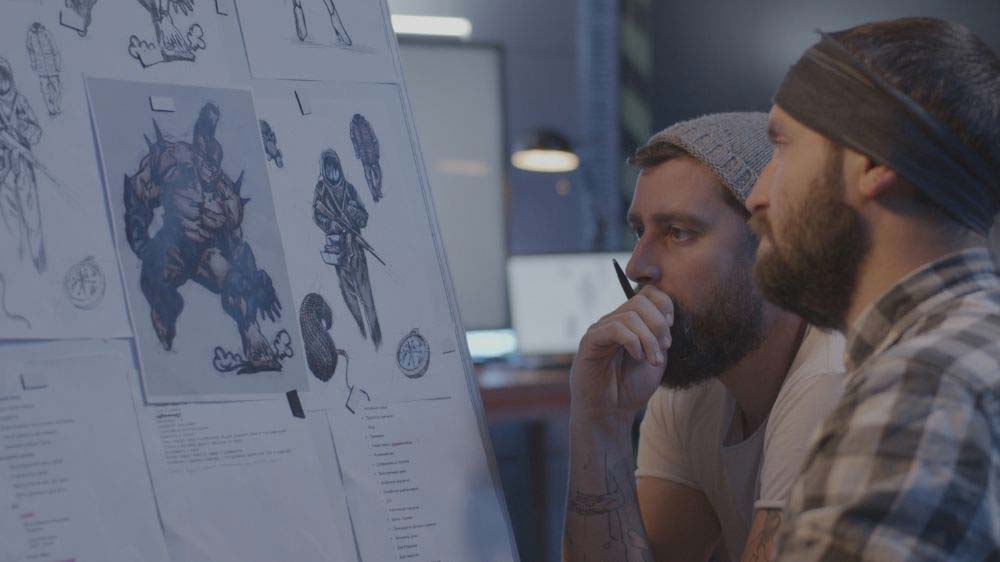
Mass production is another way to help distinguish between applied art and fine art. Fine art may have reproductions that are distributed but are typically not mass-produced. Further, the reproductions are not considered nearly as valuable, whereas the original piece is considered to be of utmost investment value.
Applied art is usually created for mass production in some way. These mass-produced pieces are considered to have a more uniform value. Here are a few examples of applied art with a final result in mass production.
- Book illustrations
- Decorative art
- Video game pre and post-production art result in a game to play.
- Vehicles of all kinds first begin as a concept and then design art and renders.
- Furniture begins as sketches, designs, and renders before production.
- Movies begin as sketches, storyboards, and design paintings before going to production artwork.
- Dishes and cookware begin as sketches and renders before production.
- Websites receive much design effort and graphic design work before being released for use and public interaction.
Art As Problem Solving (Fine Art & Applied Art)
Fine artists and applied artists alike are looking to solve a problem by using a visual art form. Fine artists have a problem that presents itself in their minds. A feeling, a picture, or a visual representation of an ethereal idea. The artist then goes about producing some kind of visual artistic representation that solves the problem. When the art is produced, the problem is considered to be solved.
An applied artist or production artist is also solving a problem. However, this problem is more likely to come from the outside.
- A film is being produced, and 14 brand new characters need to be designed for the film.
- A furniture company is looking to completely redesign a chair for both modernization and comfort.
- A video game company needs worlds designed for a new fantasy game.
- A city planning commission needs a new design and artwork depicting a new park that is going up for a public vote.
- An automobile company needs a new body design for the new model year vehicles.
- A B2B company needs new artwork to market a SaaS (Software as a Solution) to prospective clients.
In any case, the artist is given a task that requires imagination, deep thought, creativity, and the ability to produce a visual representation of the ideas that solve the given problems. The applied artist is able to use art as an effective form of visual communication.
The Value of Fine Art

Fine artists may or may not become wealthy from their fine artworks. Many traditional fine art pieces earn little to no money in compensation for the time spent producing the work. Sometimes the art does not resonate with prospective buyers. However, that is not the ultimate goal of the fine artist. The real goal is to visualize an inner idea or question in a way that satisfies the artist. The monetary profit is seen as a secondary achievement.
Fine art tends to age well. Some fine art pieces are collectible while the artist is living. It is a misconception that an artist has to die before the artwork is considered valuable. It is also true that sometimes an artist’s vision is not widely recognized until after they are gone and works are reconsidered as the culture changes. Here are a few examples of living artists whose fine artworks are revered and well valued.
- Mark Maggiori is a western artist from New Mexico whose painting, “Electric Desert” sold for nearly $100,000 in 2019. He is renowned for visually striking and emotionally piquing visualizations of the American West. His works are sure to gain both value and reputation as his career progresses.
- “Kimpsons” by Kaws sold at a Sotheby’s auction for $14.8 million dollars. Many see this work as a rip-off of an original Simpsons painting, yet no one can argue with the jaw-dropping amount that it managed to garner at auction. This work is one of many that bring up the question of fair use, to be discussed later.
- Yoshimoto Nara recently sold a large-scale painting called, “Knife Behind Back” for $25 million dollars at a Sotheby’s auction in Hong Kong. Though simplistic in nature, Nara’s works resonate with art collectors. This is not his first record-setting work sold at Christie’s.
- Hailed as the most expensive living artist in the world, Jeff Koons sold “Rabbit” in 2019 at a Christie’s auction for over $91 million dollars. Though his career is rife with controversy, and some question the simplicity and subject matter of his highest-selling works, Koons is a master of creating fine art that sells.
- David Hockney’s most expensive work so far is a work called “Portrait of an Artist (Pool With Two Figures)” which sold for $25 million dollars.
- “Abstraktes Bild” by Gerhard Richter is a contemporary abstract art piece that sold in 2020 for $88.2 million dollars at Sotheby’s in Hong Kong. Richter is known for working in various media, but this was an interesting sale. It broke a record for being the highest-selling work by a Western artist in an Asian auction.
Will the work of these fine artists continue to be valued higher when they pass and are no longer creating works of art? It is almost certainly true that the highest value of these pieces has still not been seen.
Further, these examples show that while fame and riches may be a long shot, it is worth the effort to learn to create works of fine art. The world has much reverence for aesthetic works. Also, art collecting is a form of investment for many wealthy people around the globe, who invest on the assumption that the value will continue to rise, bringing investment profits in the future.
The Value of Applied Art
Applied artists tend to be just as educated and practiced as fine artists, but the education extends beyond realism, interpretation, and aesthetics. The applied artist will learn about structure, practical application, and the sciences of design and function. Different fields of applied art will have different tracks of study.
The value of applied art is more readily seen from the time of production. Whether working as a freelancer or an employee, the artist receives compensation for the art produced from the outset. This enables artists to have thriving careers in art from the beginning, rather than hoping for compensation in the future.
While artists can achieve huge amounts of fame, if they are working for a company like Disney or DreamWorks, they are limited on the future compensation that they can receive from works produced. The intellectual property rights and copyrights are sold along with the art produced under the direction of a company.
However, a great production artist will be paid accordingly, making it a very lucrative and rewarding career in the long term. Typically, the pay is high enough and the fame is great enough that artists are happy to contract with corporations to produce art. Further, many production artists find ways to skirt contractual non-competition obligations to sell artworks on the side.
- Bobby Chiu is a break-out success both online and in the world of animation. From designing characters for Tim Burton’s “Alice in Wonderland,” he went on to owning his own studio, teaching character design and animation. He founded The Lightbox Expo and an in-depth online art school called Schoolism.
- Artist Dan LuVisi creates works that riff on well-known characters such as The Muppets, Disney, and Marvel characters. These paintings are well-loved and famous for the gory and disturbing spin on the characters. He sells both prints and graphic novels based on these characters.
- AJ Nazarro makes a living producing fan art for sale on his website. Art includes fair use of Star Wars characters and other syndicated characters such as The Joker and Teenage Mutant Ninja Turtles. This method of art production relies on the widespread fame and bulk sales of low-priced fan art products.
- Ben Mauro has worked on cult-favorite games and movies including Call of Duty and The Hobbit Series. While the artwork created for those productions are not his to sell, he now produces original works based on those he produced under contract as well as selling drawing classes.
- Kyle T Webster is a renowned professional illustrator, having produced work for huge brands such as Nike, TIME Magazine, The New Yorker, and Scholastic. He is a premium brush designer for Adobe, used by artists and illustrators all over the globe. He also produces books and collaborations with other artists.
- Aaron Blaise is one of the world’s most beloved animators. People may not know his name, but they know his work from a myriad of Disney animated classics such as The Lion King. He also teaches classes, sells materials and courses, and gives lectures and demonstrations around the United States.
- Norman Rockwell is considered by many to have been a fine artist, however, some of his most famous works were originally created as magazine covers. He also illustrated books, painted presidential portraits, worked on Coca-Cola advertising, and illustrated advertisements for products from cards to calendars.
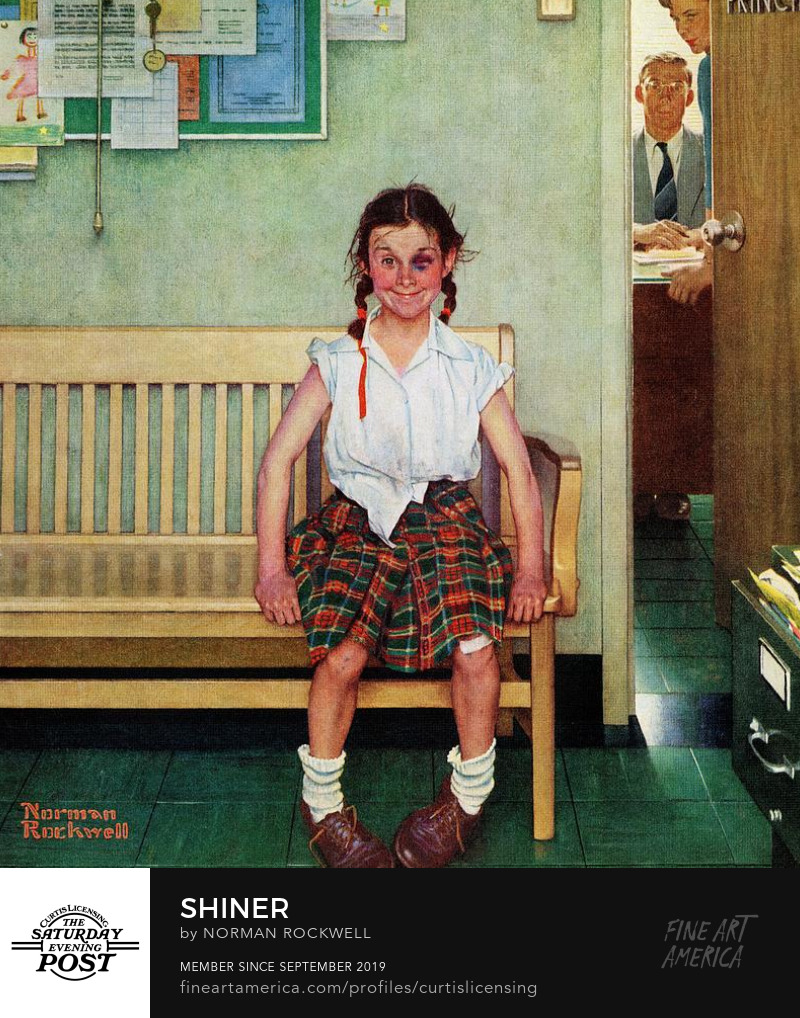
Rockwell is a wonderful and supreme example of how applied art can be created with a functional design in mind but then become a piece of cultural iconography. His thousands of works were criticized at the time by fine artists due to their commercial production rather than mere aesthetics.
In these cases, and many others, the art produced by the production artist is beautiful and realistic, however, it is not considered fine art because it has served a purpose beyond mere aesthetics. While these pieces may not garner millions of dollars in a single sale, the cultural and formative value of these works are astounding. Further, artists far and wide make a comfortable living making these works for the masses.
Blurring the Lines Between Applied Art & Fine Art
The digital revolution brought along with it many opportunities for artists to blur the lines between fine art and functional art. Especially in the realm of online distribution, sharing, teaching, and videography. Whereas in previous eras, fine art could be produced and then reproduced in a format like giclee for resale, now fine art can be posted and enjoyed worldwide, often for free.
Further, many who find themselves at home in the fine art world turn to online formats for teaching and distribution of prints. These prints are considered fine art, as they are created for aesthetics, such as hanging on a wall. However, the line is crossed into applied art when the artist uses the production of the work as an opportunity to teach paid classes that earn a living wage for the artist outside of the sale of the actual work.
There are many good examples of a new class of artists who have taken to online formats, most notably YouTube, to teach, promote, and distribute artworks, creating an income that provides both a living wage and in some cases also pays wages for production staff.
- Stan Prokopenko, aka “Proko” is probably the most widely known of the fine artists who use YouTube to promote paid classes in fine art. His hybrid approach to art creation and teaching has been emulated by artists around the world. His claims to being a fine artist bleed far into the realm of applied art.
- Mark Crilley is one of the original YouTube artists. Thinking ahead of his time, he began using YouTube to promote the sale of his works, then quickly pivoted into the production of how-to videos in drawing manga (comics and graphic novels). He now publishes manga books which provide the bulk of his income, while marketing via his YouTube following.
There are many more artists that are using online formats to promote fine artworks and helping to blur the lines and bridge the divide between fine art and applied art.
Fair Use in Both the Fine and Applied Arts
A sticky topic that both fine artists and applied artists run up against all the time is the fair use laws. Simply put, some artists use characters that are designed by others, and can then be sued for infringement on intellectual property. These lawsuits take place frequently. However, a good artist will transform the character to ensure that it does not resemble the original enough to constitute fair use infringement.
Crafters who use artwork to make tee shirts, posters, stickers, and journals are also at risk of copyright infringement. This also happens in photography, or with photographs that are then turned into artwork. Sometimes this happens with advertisement illustrations that are then used for artwork. If the piece is not shown to have undergone enough transformation by the second artist, they will be liable for copyright infringement.
A recent court case was won by a photographer named Lynn Goldsmith who sued The Warhol Foundation over fair use violations of some photographs she had taken of the singer, Prince, in 1981. The photographs were used as portraits for a magazine article.
Later, Andy Warhol used the photographs as a basis for a series of color portraits he produced of Prince that were similar to the color portraits that he did of Marilyn Monroe. Goldsmith was not aware of this use of her photographs until they were reprinted in 2016 by Vanity Fair, without a credit for the original works to Goldsmith.
This was not the first time Andy Worhol or his Foundation, after his death, was sued by another artist for imposing his own style onto another artist’s work without transforming it enough to be considered an original work. Andy Warhol is certainly not the only artist to tangle with the law over fair use and copyright, and definitely won’t be the last. Further, other industries have run into fair use entanglements with art over the years.
- Search engines have been sued over the use of thumbnails to promote search results. The courts have ruled that the direct use of thumbnails is transformative, because they do not harm the original works or photos, and do not have a negative effect on the promotion or sale of those works or photos.
- The United States Post Office was sued for using a photograph of a Korean War Veteran’s memorial on a postage stamp without first obtaining permission from the sculptor. Because the sculptor retained rights to the original work, courts ruled that creating a 2D image from a 3D work was not transformative enough.
- A television news program was successfully sued for using over a minute of a Charlie Chaplin film as part of a memorial broadcast, without obtaining permission. The courts ruled that the use violated copyright laws because the portion used contained the heart and purpose of the original film.
Conclusion
The art world is contentious and resists definitions of all kinds. Fine artists and applied artists alike tend to view their own works as containing superior value to all others. The issues of contention change as technology advances, and new techniques and platforms come to the forefront. Each artist tends to feel like an island of exclusive talent and creativity, no matter the education level, genre, or techniques.
The difference between fine art and applied art is most easily seen when viewed through the lens of intention. If the piece is intended only as a viewing aesthetic, then it is considered to be fine art. If the piece is part of a problem-solving work, a greater collaboration of work, or has a functional aspect, then it is considered to be applied art or production art.








